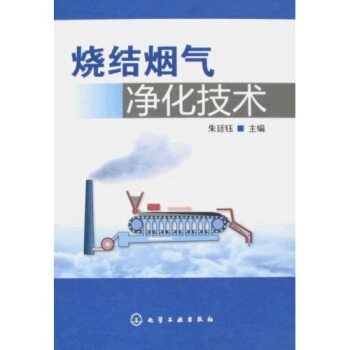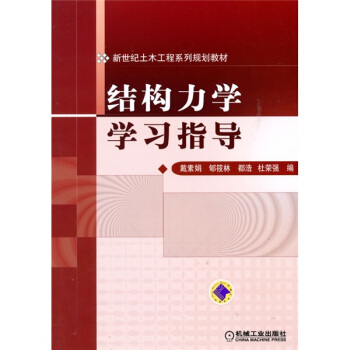![非平衡态量子场论(英文版) [Quantum Field Theory Of Non-equilibrium States]](https://pic.qciss.net/10104526/02fba0b5-3ada-4fc5-8409-e38c4dcdc447.jpg)
非平衡态量子场论(英文版) [Quantum Field Theory Of Non-equilibrium States] pdf epub mobi txt 电子书 下载 2026
- Quantum Field Theory
- Non-equilibrium
- Statistical Physics
- Condensed Matter Physics
- Many-Body Systems
- Quantum Kinetics
- Open Quantum Systems
- Dissipation
- Thermal Field Theory
- Nonequilibrium Statistical Mechanics

具体描述
内容简介
The purpose of this book is to provide an introduction to the applications of quantum field theoretic methods to systems out of equilibrium. The reason for adding a book on the subject of quantum field theory is two-fold: the presentation is, to my knowledge, the first to extensively present and apply to non-equilibrium phenomena the real-time approach originally developed by Schwinger, and subsequently applied by Keldysh and others to derive transport equations. Secondly, the aim is to show the universality of the method by applying it to a broad range of phenomena. The book should thus not just be of interest to condensed matter physicists, but to physicists in general as the method is of general interest with applications ranging the whole scale from high-energy to soft condensed matter physics. The universality of the method, as testified by the range of topics covered, reveals that the language of quantum fields is the universal description of fluctuations, be they of quantum nature, thermal or classical stochastic. The book is thus intended as a contribution to unifying the languages used in separate fields of physics, providing a universal tool for describing non-equilibrium states.内页插图
目录
Preface1 Quantum fields
1.1 Quantum mechanics
1.2 N-particle system
1.2.1 Identical particles
1.2.2 Kinematics of fermions
1.2.3 Kinematics of bosons
1.2.4 Dynamics and probability current and density
1.3 Fermi field
1.4 Bose field
1.4.1 Phonons
1.4.2 Quantizing a classical field theory
1.5 Occupation number representation
1.6 Summary
2 Operators on the multi-particle state space
2.1 Physical observables
2.2 Probability density and number operators
2.3 Probability current density operator
2.4 Interactions
2.4.1 Two-particle interaction
2.4.2 Fermio boson interaction
2.4.3 Electron-phonon interaction
2.5 The statistical operator
2.6 Summary
3 Quantum dynamics and Greens functions
3.1 Quantum dynamics
3.1.1 The SchrSdinger picture
3.1.2 The Heisenberg picture
3.2 Second quantization
3.3 Greens functions
3.3.1 Physical properties and Greens functions
3.3.2 Stable of one-particle Greens functions
3.4 Equilibrium Greens functions
3.5 Summary
4 Non-equilibrium theory
4.1 The non-equilibrium problem
4.2 Ground state formalism
4.3 Closed time path formalism
4.3.1 Closed time path Greens function
4.3.2 Non-equilibrium perturbation theory
4.3.3 Wicks theorem
4.4 Non-equilibrium diagrammatics
4.4.1 Particles coupled to a classical field
4.4.2 Particles coupled to a stochastic field
4.4.3 Interacting fermions and bosons
4.5 The self-energy
4.5.1 Non-equilibrium Dyson equations
4.5.2 Skeleton diagrams
4.6 Summary
5 Real-time formalism
5.1 Real-time matrix representation
5.2 Real-time diagrammatics
5.2.1 Feynman rules for a scalar potential
5.2.2 Feynman rules for interacting bosons and fermions
5.3 Triagonal and symmetric representations
5.3.1 Fermion-boson coupling
5.3.2 Two-particle interaction
5.4 The real rules: the RAK-rules
5.5 Non-equilibrium Dyscn equations
5.6 Equilibrium Dyscn equation
5.7 Real-time versus imaginary-time formalism
5.7.1 Imaginary-time formalism
5.7.2 Imaginary-time Greens functions
5.7.3 Analytical continuation procedure
5.7.4 Kadanoff-Baym equations
5.8 Summary
6 Linear response theory
6.1 Linear response
6.1.1 Density re~,ponse
6.1.2 Current response
6.1.3 Ccnductivity tensor
6.1.4 Ccnductance
6.2 Linear response cf Greens functions
6.3 Properties cf respone hmctions
6.4 Stability cf the thermal equilibrium ,tate
6.5 Fluctuation-dissipation theorem
6.6 Time-reversal symmetry
6.7 Scattering and correlation functions
6.8 Summary
7 Quantum kinetic equations
7.1 Left-right subtracted Dyson equation
7.2 Wigner or mixed coordinates
7.3 Gradient approximation
7.3.1 Spectral weight function
7.3.2 Quasi-particle approximation
7.4 Impurity scattering
7.4.1 Boltzmannian motion in a random potential
7.4.2 Brownian motion
7.5 Quasi-classical Greens function technique
7.5.1 Electron-phonon interaction
7.5.2 Renormalization of the a.c. conductivity
7.5.3 Excitation representation
7.5.4 Particle conservation
7.5.5 Impurity scattering
7.6 Beyond the quasi-classical approximation
7.6.1 Thermo-electrics and magneto-transport
7.7 Summary
8 Non-equilibrium superconductivity
8.1 BCS-theory
8.1.1 Nambu or particle-hole space
8.1.2 Equations of motion in Nambu Keldysh space
8.1.3 Greens functions and gauge transformations
8.2 Quasi-classical Greens function theory
8.2.1 Normalization condition
8.2.2 Kinetic equation
8.2.3 Spectral densities
8.3 Trajectory Greens functions
8.4 Kinetics in a dirty superconductor
8.4.1 Kinetic equation
8.4.2 Ginzburg-Landau regime
8.5 Charge imbalance
8.6 Summary
9 Diagrammatics and generating functionals
9.1 Diagrammatics
9.1.1 Propagators and vertices
9.1.2 Amplitudes and superposition
9.1.3 Fundamental dynamic relation
9.1.4 Low order diagrams
9.2 Generating functional
9.2.1 Fhnctional differentiation
9.2.2 From diagrammatics to differential equations
9.3 Connection to operator formalism
9.4 Fermions and Grassmann variables
9.5 Generator of connected amplitudes
9.5.1 Source derivative proof
9.5.2 Combinatorial proof
9.5.3 Functional equation for the generator
9.6 One-particle irreducible vertices
9.6.1 Symmetry broken states
9.6.2 Greens functions and one-particle irreducible vertices
9.7 Diagrammatics and action
9.8 Effective action and skeleton diagrams
9.9 Summary
10 Effective action
10.1 Functional integration
10.1.1 Functional Fourier transformation
10.1.2 Gaussian integrals
10.1.3 Fermionic path integrals
10.2 Generators as functional integrals
10.2.1 Euclid versus Minkowski
10.2.2 Wicks theorem and functionals
10.3 Generators and 1PI vacuum diagrams
10.4 1PI loop expansion of the effective action
10.5 Two-particle irreducible effective action
10.5.1 The 2PI loop expansion of the effective action
10.6 Effective action approach to Bose gases
10.6.1 Dilute Bose gases
10.6.2 Effective action formalism for bosons
10.6.3 Homogeneous Bose gas
10.6.4 Renormalization of the interaction
10.6.5 Inhomogeneous Bose gas
10.6.6 Loop expansion for a trapped Bose gas
10.7 Summary
11 Disordered conductors
11.1 Localization
11.1.1 Scaling theory of localization
11.1.2 Coherent backscattering
11.2 Weak localization
11.2.1 Quantum correction to conductivity
11.2.2 Cooperon equation
11.2.3 Quantum interference and the Cooperon
11.2.4 Quantum interference in a magnetic field
……
12 Classical Statistical Dynamics
Appendices
前言/序言
The purpose of this book is to provide an introduction to the applications of quantum field theoretic methods to systems out of equilibrium. The reason for adding a book on the subject of quantum field theory is two-fold: the presentation is, to my knowledge, the first to extensively present and apply to non-equilibrium phenomena the real-time approach originally developed by Schwinger, and subsequently applied by Keldysh and others to derive transport equations. Secondly, the aim is to show the universality of the method by applying it to a broad range of phenomena. The book should thus not just be of interest to condensed matter physicists, but to physicists in general as the method is of general interest with applications ranging the whole scale from high-energy to soft condensed matter physics. The universality of the method, as testified by the range of topics covered, reveals that the language of quantum fields is the universal description of fluctuations, be they of quantum nature, thermal or classical stochastic. The book is thus intended as a contribution to unifying the languages used in separate fields of physics, providing a universal tool for describing non-equilibrium states.Chapter 1 introduces the basic notions of quantum field theory, the bose and fermi quantum fields operating on the multi-particle state spaces. In Chapter 2, op- erators on the multi-particle space representing physical quantities of a many-body system are constructed. The detailed exposition in these two chapters is intended to ensure the book is self-contained. In Chapter 3, the quantum dynamics of a many-body system is described in terms of its quantum fields and their correla- tion functions, the Greens functions. In Chapter 4, the key formal tool to describe non-equilibrium states is introduced: Schwingers closed time path formulation of non-equilibrium quantum field theory, quantum statistical mechanics. Perturbation theory for non-equilibrium states is constructed starting from the canonical operator formalism presented in the previous chapters. In Chapter 5 we develop the real-time formalism necessary to deal with non-equilibrium states; first in terms of matrices and eventually in terms of two different types of Greens functions. The diagram representation of non-equilibrium perturbation theory is constructed in a way that the different aspects of spectral and quantum kinetic properties appear in a physi- cally transparent and important fashion for non-equilibrium states. The equivalence of the real-time and imaginary-time formalisms are discussed in detail. In Chap- ter 6 we consider the coexistence regime between equilibrium and non-equilibrium states, the linear response regime. In Chapter 7 we develop and apply the quantum kinetic equation approach to the normal state.
用户评价
我之所以选择这本《非平衡态量子场论》,很大程度上是被其“非平衡态”这个关键词所吸引。在我学习量子场论的传统课程时,重点往往聚焦于渐近自由、对称性破缺等平衡态下的现象,而对于远离平衡态的复杂演化过程,则涉及较少。我一直在思考,在宇宙的早期,或者是在一些极端物理条件下,比如黑洞附近,量子场是如何处于非平衡状态并演化出我们今天观测到的现象的。因此,这本副标题为“非平衡态量子场论”的书,恰恰满足了我对这些问题的探索欲。我期待书中能够提供一套系统性的方法论,来分析和描述量子场在非平衡态下的动态行为。这可能涉及到一些我尚不熟悉的数学工具或概念,例如Keldysh方法,或者是一些用于处理非平衡态格林函数的技术。我希望作者能够循序渐进地引导读者,从一些相对简单的模型入手,逐步深入到更复杂、更现实的物理场景。我也对书中是否会讨论非平衡态下的量子相变,或者如何在实验上探测和验证非平衡态量子场论的预测感到非常好奇。毕竟,理论的生命力在于其能否被实验所检验。
评分这本书的书名《非平衡态量子场论》给我一种耳目一新的感觉。我之前接触过的量子场论书籍,大多是围绕着相对论性量子场论、标准模型以及某些特定的量子现象展开,而“非平衡态”这个概念在其中并不突出。我了解到,很多重要的物理过程,无论是宇宙的形成、生命体的演化,还是凝聚态物质中的动态相变,都发生在远离平衡态的条件下。而传统的量子场论在描述这些过程时,往往会遇到理论上的挑战。因此,我对于本书如何将量子场论的强大工具应用于分析这些非平衡态过程感到非常兴奋。我猜测书中可能会涉及如何构建描述非平衡态量子系统的有效理论,以及如何利用量子场论的方法来计算一些重要的物理量,例如输运系数、激发谱以及相干性的衰减等。我非常期待书中能够提供一些具体的案例分析,比如在凝聚态物理中,如何用非平衡态量子场论来理解强激光照射下的材料动力学,或者在天体物理中,如何描述宇宙早期量子场的演化。我相信,这本书将为我提供一个全新的视角来理解我们所处的这个动态演化的宇宙。
评分这本书的封面设计着实吸引人,那种深邃的蓝色与细致的金色线条交织,仿佛预示着书中即将展开的宇宙奥秘。我毫不夸张地说,在拿到这本书之前,我对“非平衡态”这个词的理解仅限于日常生活中电源的插拔或者水的流动,脑海中并没有将其与量子场论这样高深莫测的领域联系起来。然而,翻开第一页,尽管我还没有深入到具体的公式推导,但作者开篇就用一种引人入胜的方式,将宏观世界的直观现象与微观量子世界的复杂性巧妙地衔接起来。我能够感觉到,这本书并非是那种枯燥乏味的教科书,它似乎在邀请读者一同踏上一场智力探险,去探索那些我们司空见惯却又充满未知的物理现象背后,潜藏着的量子规律。我特别期待书中对“相干性”和“量子涨落”在非平衡态下的讨论,因为在我粗浅的理解中,这些概念往往与平衡态下的体系描述息息相关,而探索它们在动态演化中的行为,想必会带来全新的视角和深刻的洞察。我甚至开始设想,书中的内容会不会涉及到一些前沿的实验现象,比如超导、超流体的动态行为,或者一些宇宙学模型中关于早期宇宙的演化过程。总之,这本书的初步印象,就是它能够以一种既严谨又富有启发性的方式,将复杂的量子场论概念,应用于我们难以直接观察但又至关重要的非平衡态物理世界,这本身就是一种巨大的吸引力。
评分坦白讲,我购买这本书时,主要是出于对其“非平衡态”这一主题的好奇。我一直在关注粒子物理和凝聚态物理的交叉领域,而“非平衡态量子场论”听起来就是一个极具挑战性和前沿性的方向。我预想中,书中会大量涉及复杂的数学工具,例如路径积分、费曼图以及各种重整化群方法,但作者能够如何将这些工具巧妙地应用于描述那些远离热力学平衡的量子系统,是让我最为期待的部分。尤其是在处理那些具有强关联、强非线性的系统时,传统的平衡态理论往往显得力不从心,而非平衡态量子场论的出现,无疑为我们提供了一个更强大的理论框架。我希望书中能够清晰地阐释,为何在非平衡态下,某些在平衡态下被忽略的效应会变得至关重要。例如,时间演化算符的计算,以及如何有效地处理开放量子系统的退相干过程,这些都是非平衡态理论的核心内容。我还在猜测,书中是否会探讨诸如量子信息处理、高能物理碰撞中的热化过程,甚至是黑洞信息悖论等与非平衡态相关的热门议题。尽管我可能无法完全消化书中的每一个细节,但我相信,即便只是理解其核心思想和方法论,也能极大地拓宽我对量子场论应用的认知边界。
评分拿起这本书,首先映入眼帘的是“非平衡态”这个词,它立刻勾起了我对物理世界中那些瞬息万变的现象的联想。我一直对那些在动态演化中展现出奇妙量子行为的系统非常着迷,而传统的量子场论,在描述平衡态时显得得心应手,但在面对充满活力、不断变化的非平衡态时,似乎总有种力不从心的感觉。因此,这本书的出现,对我来说就像是一束光,照亮了这片曾经相对模糊的领域。我迫不及待地想知道,书中将如何用严谨的量子场论语言来刻画那些动态的量子过程。我猜测,书中可能会涉及一些我之前未曾深入了解过的数学框架,比如如何处理时间依赖性的算符、如何引入无压元的算符以及如何计算那些具有复杂时间演化的格林函数。我也对书中是否会探讨一些前沿的物理问题,例如量子相变在非平衡态下的表现,或者如何利用非平衡态量子场论来理解某些新兴的凝聚态物理现象,如拓扑材料在动态过程中的性质。总而言之,这本书承诺了我将获得一套全新的工具和视角,去理解那些在动态中涌现的量子奇迹。
评分非常好的一本写非平衡态格林函数的书。作者在 Review of Modern Physics 上有一篇这方面的 review 文章。这本书比那个文章更细致也更易读。强烈推荐做 quantum transport 方面研究的人都读一读。
评分多读书,可以让你多增加一些课外知识。培根先生说过:“知识就是力量。”不错,多读书,增长了课外知识,可以让你感到浑身充满了一股力量。这种力量可以激励着你不断地前进,不断地成长。读书可以调节身体的血管流动,使你身心健康。[QY]所以用读书来为自己放松心情也是一种十分明智的。 读书能陶冶人的情操,给人知识和智慧。在书的海洋里遨游也是一种无限快乐的事情。读书养性,读书可以陶冶自己的性情,使自己温文尔雅,具有书卷气;从书中,你往往可以发现自己身上的不足之处,使你不断地改正错误,摆正自己前进的方向。所以,书也是我们的良师益友。 多读书,可以让你变聪明,变得有智慧去战胜对手。书让你变得更聪明,你就可以勇敢地面对困难。让你用自己的方法来解决这个问题。这样,你又向你自己的人生道路上迈出了一步。 多读书,也能使你的心情便得快乐。读书也是一种休闲,一种娱乐的方式。 其实读书有很多好处,就等有心人去慢慢发现. 最大的好处是可以让你有属于自己的本领靠自己生存。
评分非常好的一本写非平衡态格林函数的书。作者在 Review of Modern Physics 上有一篇这方面的 review 文章。这本书比那个文章更细致也更易读。强烈推荐做 quantum transport 方面研究的人都读一读。
评分一本好书 需要慢慢琢磨 就是略旧
评分一本好书 需要慢慢琢磨 就是略旧
评分好……
评分The purpose of this book is to provide an introduction to the applications of quantum field theoretic methods to systems out of equilibrium. The reason for adding a book on the subject of quantum field theory is two-fold: the presentation is, to my knowledge, the first to extensively present and apply to non-equilibrium phenomena the real-time approach originally developed by Schwinger, and subsequently applied by Keldysh and others to derive transport equations. Secondly, the aim is to show the universality of the method by applying it to a broad range of phenomena. The book should thus not just be of interest to condensed matter physicists, but to physicists in general as the method is of general interest with applications ranging the whole scale from high-energy to soft condensed matter physics.
评分给力的一本好书,字迹什么的都很不错,挺好的
评分好……
相关图书
本站所有内容均为互联网搜索引擎提供的公开搜索信息,本站不存储任何数据与内容,任何内容与数据均与本站无关,如有需要请联系相关搜索引擎包括但不限于百度,google,bing,sogou 等
© 2026 book.qciss.net All Rights Reserved. 图书大百科 版权所有

![牛津英语百科分类词典系列:牛津地球科学词典 [Oxford Dictionary of Earth Sciences] pdf epub mobi 电子书 下载](https://pic.qciss.net/10114802/e9cc17e1-f223-46ae-bb7b-80d5eaafe553.jpg)
![染色体基因与疾病 [Chromosome, gene and disease] pdf epub mobi 电子书 下载](https://pic.qciss.net/10122736/10add117-c020-46c2-a009-1ec15744313c.jpg)


![细胞周期调控原理 [The Cell Cycle:Principles of Control] pdf epub mobi 电子书 下载](https://pic.qciss.net/10123398/bd0d4a1a-211a-4901-9a59-e903bf8e2445.jpg)














